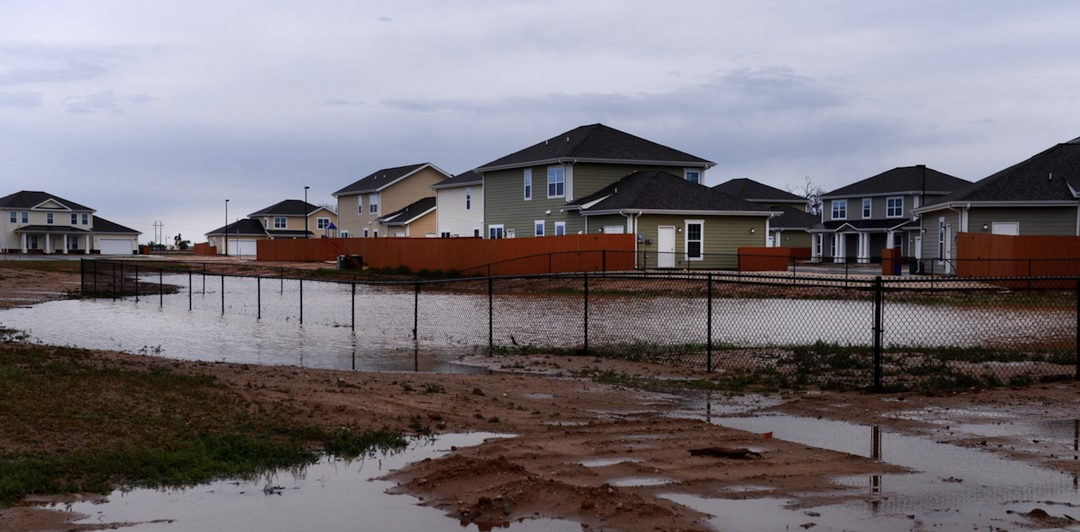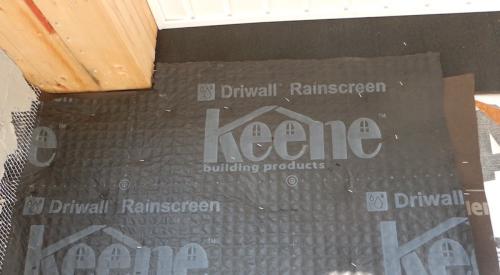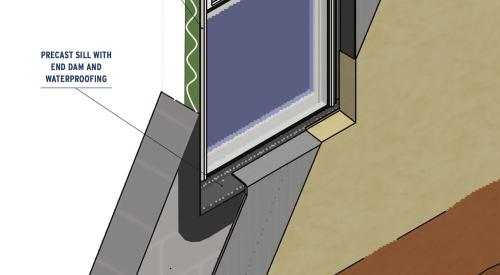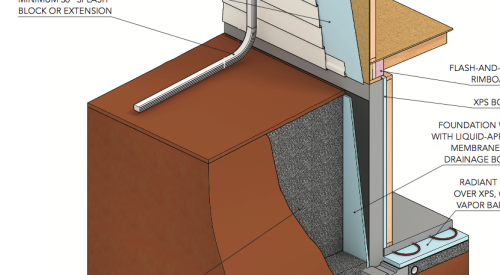Water intrusion is the biggest warranty issue in the home building industry. Nearly all production home builders have water intrusion issues in their homes at one point or another; it doesn't matter whether a home is built in Miami or Tucson, Ariz. And these days, the best way to retain more for your bottom line is to stop wasting money on warranty repairs.
It's possible to save millions of dollars by eliminating some of your most basic warranty issues. But money isn't the only thing at stake. Preventing warranty issues can also engender trust and boost your company's image in the eyes of current and future customers. With a little more knowledge, home building teams can avoid warranty issues before they even begin. Start by taking a look at water intrusion and you'll see what we mean.
In the last few years, one housing giant's division handled claims that resulted from water intrusion in more than 700 homes in four communities. The cost to date averages $53,000 per home and is expected to top out at more than $37 million when all is said and done.
Another home builder handled water intrusion claims in more than 400 homes of its 13 communities.
The builder's costs average more than $2,000 per home and are expected to reach $1 million.
Why Is Water Management So Important?
Water management plays a critical role in making a home safe, comfortable and durable. Water management also helps in managing risk and maintaining insurance coverage. While construction methods vary by region and market, the goal of water management is the same for every home: to prevent water intrusion by guiding water down and away from the home.
Water Intrusion in the Home—What Happens? And Where?
When water enters a home, it can lead to damage that compromises quality, endangers the health of homeowners and reduces the home's market value. Water damage can be minor; water intrusion through a foundation wall can cause basement paint to peel, reducing the home's cosmetic value. Water damage can also be serious; water intrusion through walls can rot framing and sheathing.
Windows and doors are the areas of a home most likely to experience water intrusion. They're especially vulnerable areas because they interrupt the continuity of the home's drainage plane. It's typical to see windows and doors with incorrectly installed flashing or without flashing at all.
RELATED
- Getting Rainscreens Right to Help Ensure Walls Stay Dry
- Proper Backfilling and Grading for a Dry Foundation
- Development: Smart Stormwater Management
Take windows for example. The sill is the most likely place for leaks to occur. Without sill pan flashing, wind can drive rain up into the opening at the sill; if the sill is flat or, even worse, sloped toward the interior, wind-driven rain is even more likely to enter the opening. Sill pan flashing is essential to eliminating water intrusion at a window. It's possible to prevent water intrusion through windows, doors and other areas by implementing an effective water management strategy.
Stop the Problem: Key Strategies for Water Management
One of the most important strategies of water management is installing a drainage plane. Every home needs a drainage plane, no matter the home's geographical location. A drainage plane directs all water that penetrates the exterior finish down and away from the home. To be effective, the drainage plane has to run continuous from the roof to the ground and integrate with flashing at intersections, penetrations and other critical areas.
It's essential to instill the idea that every home needs a drainage plane. Building codes across the U.S. are beginning to require a weather-resistant barrier on walls, making it likely to become a standard practice in home building construction. For more information about drainage planes, check out "Wrapping Your Homes in Water Protection," an article on Jobsite that covers the fundamentals of installing a drainage plane.
To prevent water intrusion, teams in the field need quick access to the best knowledge and training. Using resources such as Toolbelt, which is designed to teach builders about the industry's top warranty issues, can help your company disseminate information easily and conveniently.
Putting the right information in the right hands at the right time can save your company millions of dollars in warranty claims. Water intrusion may be the most common and costly quality issue in our industry, but you can prevent it by using the right construction practices and the right building materials.
Don't Do This—3 biggest mistakes that lead to water intrusion
1. Not installing a drainage plane
2. Poorly detailing or inspecting windows and doors for flashing
3. Assuming trades know how to install a drainage plane
Top 5 vulnerable areas of the home where water can enter
These are the top five areas of the home that experience water intrusion:
1. Windows and doors
2. Architectural projections
3. Roof-to-wall and deck-to-wall intersections
4. Roof
5. Foundation
Michael Dickens is the CEO of BuildIQ, which provides online information, tools and training in home building best practices to help builders take their homes and businesses to the next level of quality and performance.













